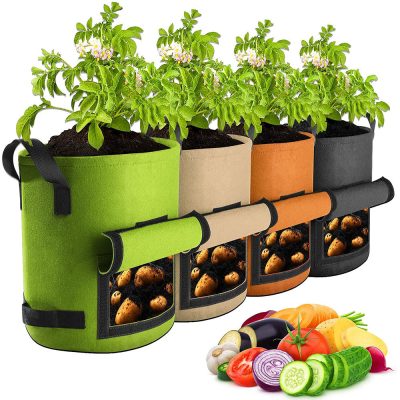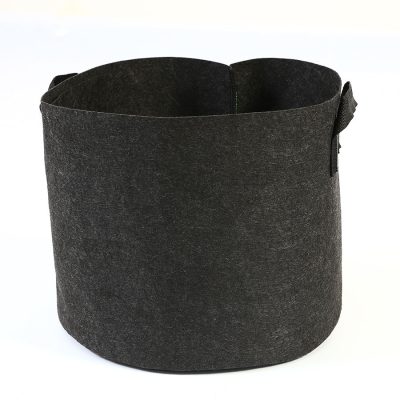Fabric grow bags have gained popularity among gardeners and horticulturists due to their numerous benefits for plant growth and root health. When choosing a fabric grow bag, several factors need to be considered, including material, size, shape, and drainage. Here are some different types of fabric grow bags and their characteristics to help you make an informed decision:
- Non-Woven Polypropylene Bags:
- Material: Made from non-woven polypropylene fabric.
- Characteristics: Lightweight, breathable, and durable. Provides good aeration and drainage while retaining moisture. Offers UV resistance.
- Suitable for: Various types of plants, including vegetables, herbs, flowers, and shrubs.
- Felt Grow Bags:
- Material: Constructed from thick, needle-punched felt fabric.
- Characteristics: Sturdy, insulating, and breathable. Maintains a balanced moisture level and excellent drainage. Retains shape well.
- Suitable for: Trees, shrubs, perennials, and plants that require better insulation.
- Smart Pots:
- Material: Made from a patented, geotextile fabric.
- Characteristics: Lightweight, porous, and allows air pruning of roots. Provides enhanced aeration and prevents root circling. Maintains moisture while facilitating proper drainage.
- Suitable for: All types of plants, especially those with a tendency for root-bound issues.
- Hessian/Burlap Bags:
- Material: Natural fibers from jute or sisal plants.
- Characteristics: Biodegradable, breathable, and provides moderate drainage. Retains moisture and allows some aeration. Suitable for short-term use.
- Suitable for: Temporary planting, ornamental plants, and short-season crops.
- Breathable Plastic-Lined Bags:
- Material: Fabric bags with a plastic lining.
- Characteristics: Combines the benefits of fabric bags with added moisture retention due to the plastic lining. Provides good drainage and aeration.
- Suitable for: Plants requiring higher moisture levels and gardeners who want the advantages of fabric bags with increased water retention.
When choosing a fabric grow bag, consider the specific needs of your plants, the climate you’re in, and the durability and reusability of the bag. Additionally, ensure the size and shape of the bag accommodate the root system of your plants adequately.








